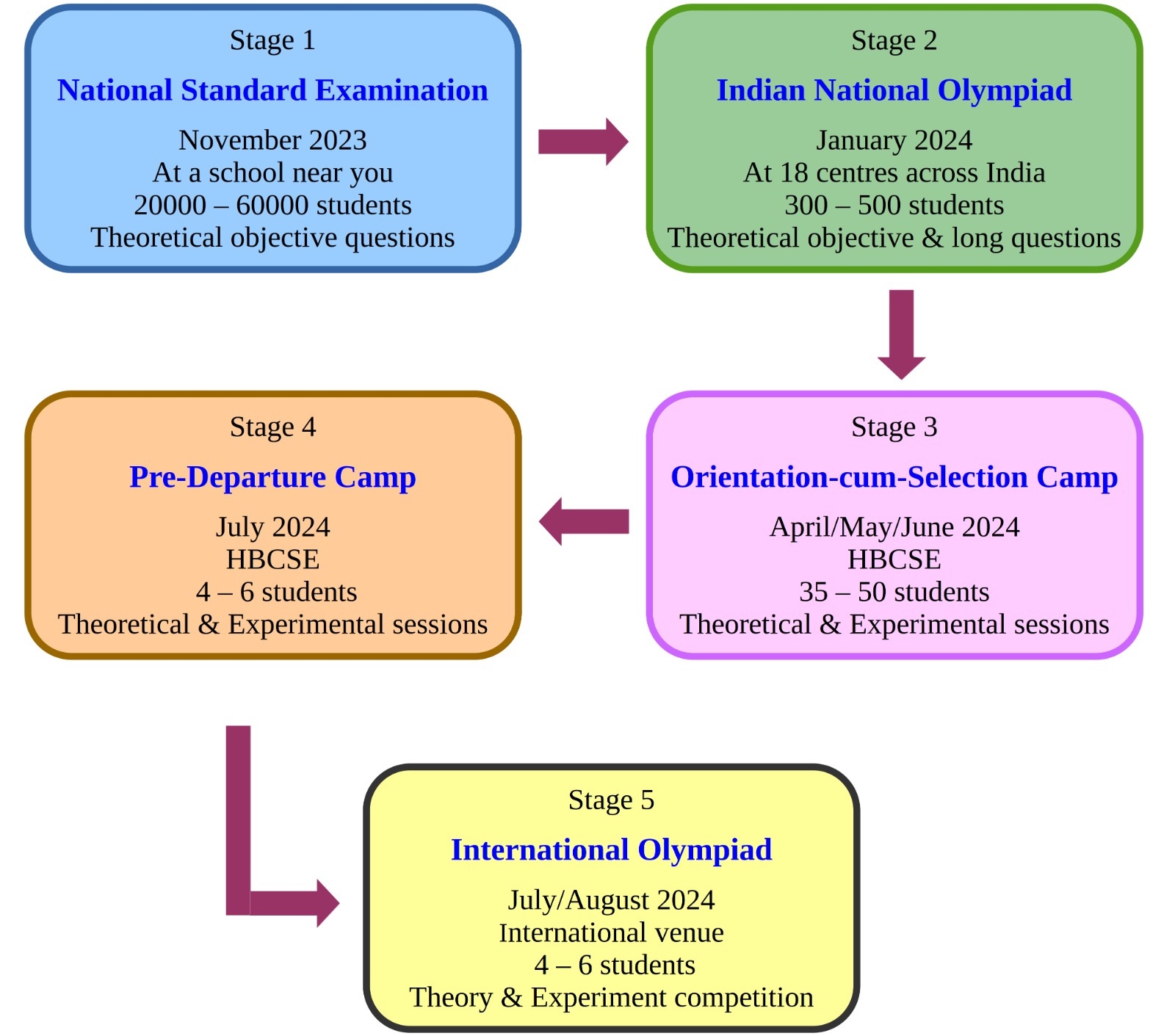The National Science Olympiad starts with an examination held at numerous schools across the country and culminates with the international Olympiads at different corners of the world. The national level examinations are designed to assess conceptual understanding, logical reasoning, laboratory skills, and above all, the ability to apply problem-solving skills to novel situations, both theoretical and experimental. Training is included from the third stage of the programme and the first two stages do not necessarily require any specialised coaching outside the regular school system.

Stage 1:
The first stage examination, the National Standard Examination (NSE) is the organisational responsibility of the Indian Association of Physics Teachers (IAPT). The academic responsibility for Chemistry and Biology rests with the Association of Chemistry Teachers (ACT) and the Association of Teachers in Biological Sciences (ATBS) respectively, while Physics, Astronomy and Junior Science are handled by IAPT itself. The NSEs are tests with objective type questions and are offered in English and Hindi, with additional languages also available in Physics. The syllabus is broadly equivalent to up to Class XII (for Astronomy, Biology, Chemistry and Physics) and Class X (for Junior Science) of the Central Board of Secondary Education (CBSE). However, the questions in all levels of Olympiads (including NSEs) may be expected to be of a higher difficulty level than the board examinations. These examinations are held close to the end of November every year at numerous centres across the nation. Students can register for this preliminary stage at their own schools or directly online. The registration fee is Rs 200, which is the only fee that the student has to pay in the entire process up to the International Olympiads.
Stage 2:
The best-performing students from the NSEs (approximately 300 in each subject) qualify for the second stage — the Indian National Olympiads (INOs). The responsibility of the programme from this stage onwards lies with HBCSE. The INOs are held in late January at around 18 centres across the country. The syllabus is the same as that of the NSEs. The tests consist of objective as well as long questions.
Stage 3:
The top students from the INOs (approximately 35 in each subject) are invited for the third stage, the Orientation-cum-Selection Camps (OCSCs) held at HBCSE from April to June. At these camps, orientation is provided to students for the Olympiad level of theoretical, experimental and observational (for astronomy) tasks. Emphasis is laid on developing conceptual foundations and problem-solving skills. Students are exposed to innovative experiments with a focus on conceptual and procedural understanding in experimental science. In astronomy, students are trained in basic notions in astrophysics, astronomical data analysis and night sky observations. Several theoretical and experimental/observational tests are held during the camp. On the basis of performance in these tests, few students (numbers specified below) are selected to represent India at the international Olympiads.
Stage 4:
The selected Indian teams undergo a rigorous training programme at HBCSE in theory and experiment and in case of astronomy, observational astronomy prior to their departure for the international Olympiads. Special laboratories have been developed in HBCSE for this purpose. Resource persons from different institutions across the country are invited to the training camps.
Stage 5:
The Olympiad programme culminates with the participation of the Indian students (4-6 in each subject) in the International Olympiads. The students are accompanied by 2-4 teachers or mentors. Almost every Indian student who has participated in the Science and Astronomy Olympiads has returned with a medal. For details of the performance, click here.